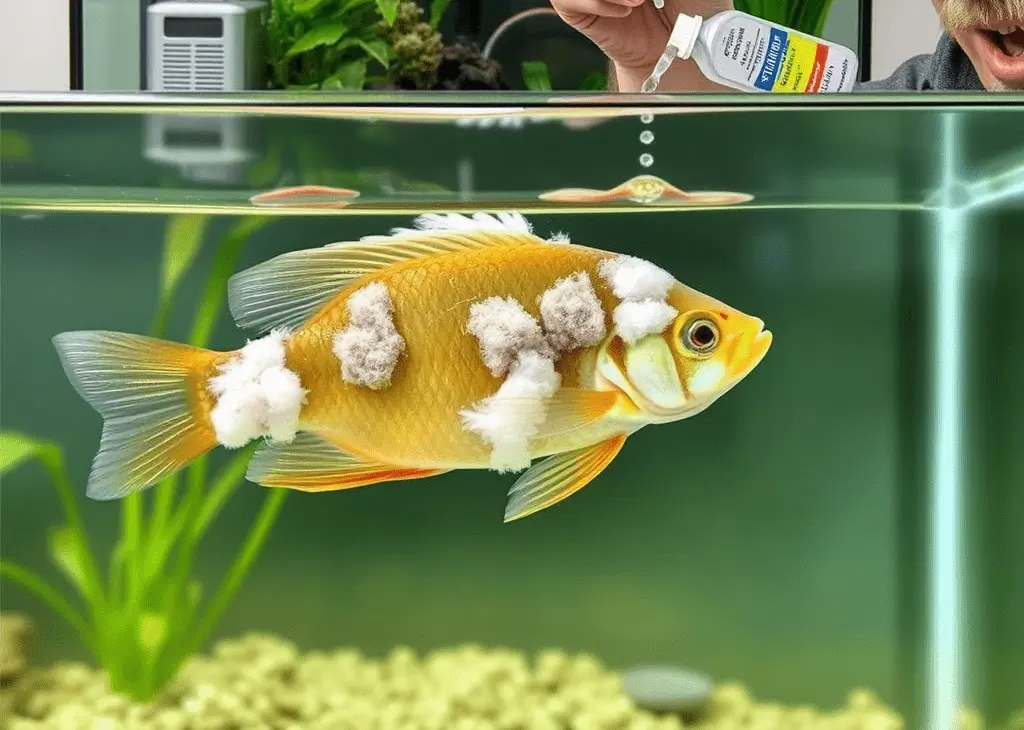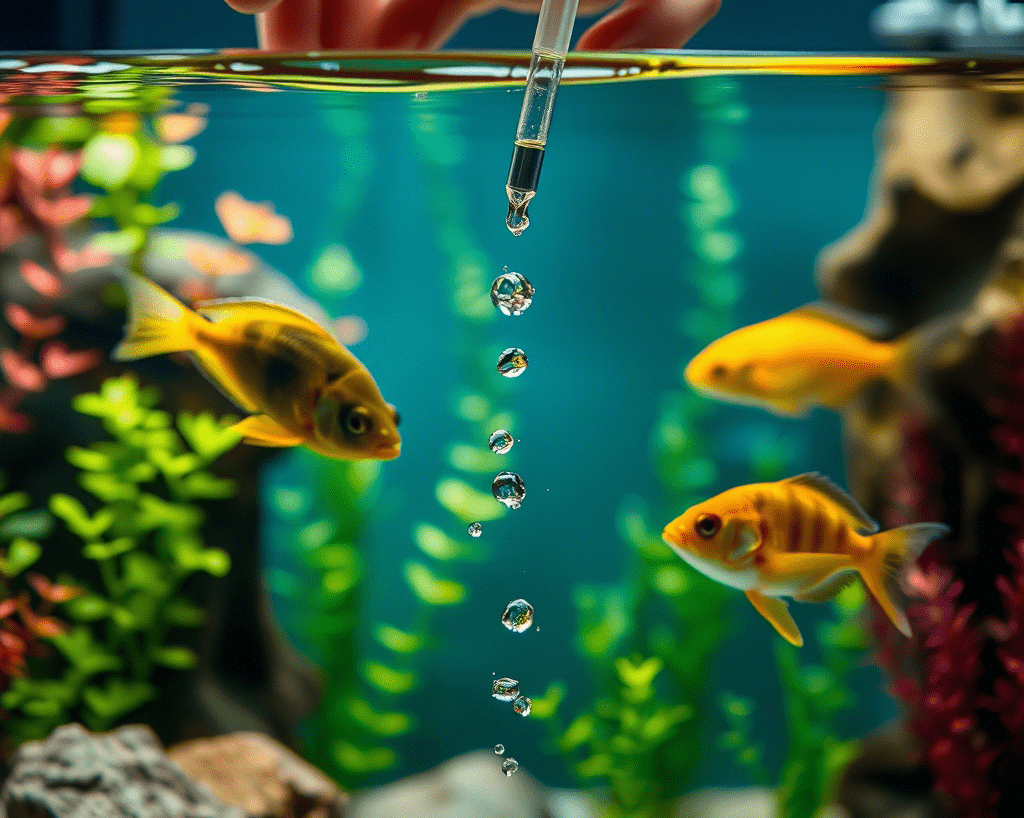7 Proven Strategies for a Healthy Aquarium
Fungal infections in fish tanks are a common yet often misunderstood issue that can jeopardize the health of your aquatic pets. If left untreated, these infections can spread rapidly, causing stress, illness, and even death among your fish. But don’t worry—this guide will walk you through everything you need to know about identifying, treating, and preventing fungal infections in your aquarium. With actionable steps and expert insights, you’ll be equipped to create a thriving underwater environment.
Introduction: Why Fungal Infections Matter
Imagine this: You’ve spent weeks carefully curating your aquarium, selecting vibrant fish, lush plants, and decorative elements. Suddenly, you notice white, cotton-like growths on your fish or tank surfaces. This is a fungal infection—a silent threat that can disrupt the harmony of your aquatic ecosystem. According to aquarium experts, over 60% of fish tank issues stem from poor water quality, which creates a breeding ground for fungi. Understanding how to treat and prevent these infections is not just about aesthetics; it’s about ensuring the well-being of your aquatic companions.
In this article, we’ll address frequently asked questions, debunk myths, and provide practical solutions to combat fungal infections effectively. Let’s dive in!
What Causes Fungal Infections in Fish Tanks?

Before jumping into treatment, it’s crucial to understand the root causes of fungal infections. Here are the most common culprits:
1. Poor Water Quality: High levels of ammonia, nitrites, or nitrates create an ideal environment for fungi.
2. Overcrowding: Too many fish in a small space increases stress and susceptibility to infections.
3. Injuries: Scratches or open wounds on fish serve as entry points for fungi.
4. Improper Feeding: Overfeeding leads to uneaten food decomposing, which fuels fungal growth.
5. Lack of Maintenance: Infrequent water changes and filter cleaning contribute to fungal proliferation.
Key Insight: A clean, well-maintained tank is your first line of defense against fungal infections.
How to Identify Fungal Infections in Your Fish Tank
Spotting a fungal infection early can save your fish and prevent further complications. Look out for these telltale signs:
- White, Cotton-Like Patches: These often appear on fish bodies, fins, or around the mouth.
- Clamped Fins: Fish with fungal infections may keep their fins close to their bodies.
- Lethargy: Infected fish tend to become less active and may isolate themselves.
- Cloudy Water: While not always indicative of fungi, cloudy water can signal underlying issues.
Pro Tip: Use a magnifying glass to inspect fish closely if you suspect an infection.
Step-by-Step Guide to Treating Fungal Infections

Treating fungal infections requires a systematic approach. Follow these seven proven strategies to restore your tank’s health:
1. Isolate Infected Fish
Remove infected fish from the main tank and place them in a quarantine tank. This prevents the infection from spreading to other fish.
2. Perform a Partial Water Change
Replace 25-50% of the tank water with fresh, dechlorinated water. This reduces harmful toxins and improves water quality.
3. Clean the Tank Thoroughly
Scrub tank walls, decorations, and substrate to remove any visible fungal growth. Avoid harsh chemicals—use aquarium-safe cleaners instead.
4. Use Antifungal Medications
Administer antifungal treatments specifically designed for aquariums. Popular options include Methylene Blue and Malachite Green. Always follow the dosage instructions carefully.
5. Improve Filtration
Upgrade your filtration system or add activated carbon to remove impurities and maintain optimal water conditions.
6. Monitor Water Parameters
Regularly test the water for pH, ammonia, nitrite, and nitrate levels. Aim for a pH of 6.5-7.5 and zero ammonia/nitrite levels.
7. Enhance Fish Immunity
Provide a balanced diet rich in vitamins and minerals to boost your fish’s immune system. Consider adding supplements like garlic extract.
Frequently Asked Questions About Fungal Infection Treatment
Q1: Can I use household antifungals in my fish tank?
No, household antifungals are toxic to fish and can harm beneficial bacteria. Always use aquarium-specific treatments.
Q2: How long does it take to treat a fungal infection?
Treatment duration varies but typically lasts 7-14 days. Consistency is key—follow the treatment plan diligently.
Q3: Will fungal infections go away on their own?
Rarely. Without intervention, fungal infections can worsen and lead to fatalities.
Q4: Can plants cause fungal infections?
Yes, decaying plant matter can harbor fungi. Trim dead leaves and remove debris regularly.
Q5: Is prevention better than cure?
Absolutely. Maintaining a clean tank and monitoring water parameters can prevent most fungal outbreaks.
Preventing Future Fungal Infections
Prevention is always better than cure. Here are some proactive measures to safeguard your aquarium:
- Conduct weekly water changes (20-30%).
- Avoid overstocking your tank.
- Quarantine new fish before introducing them to the main tank.
- Feed your fish sparingly to minimize waste.
- Invest in a high-quality filtration system.
Did You Know? Studies show that maintaining stable water parameters reduces infection risks by up to 80%.
Conclusion: Take Action Today for a Thriving Aquarium
Fungal infections in fish tanks may seem daunting, but with the right knowledge and tools, you can overcome them. By understanding the causes, recognizing symptoms, and implementing effective treatments, you’ll create a safe and healthy environment for your aquatic friends. Remember, consistency and vigilance are your best allies in this journey. Don’t wait until it’s too late—act now to protect your fish and enjoy the beauty of a thriving aquarium.
Ultimate Guide to Aquarium Mental Health & Plant Care